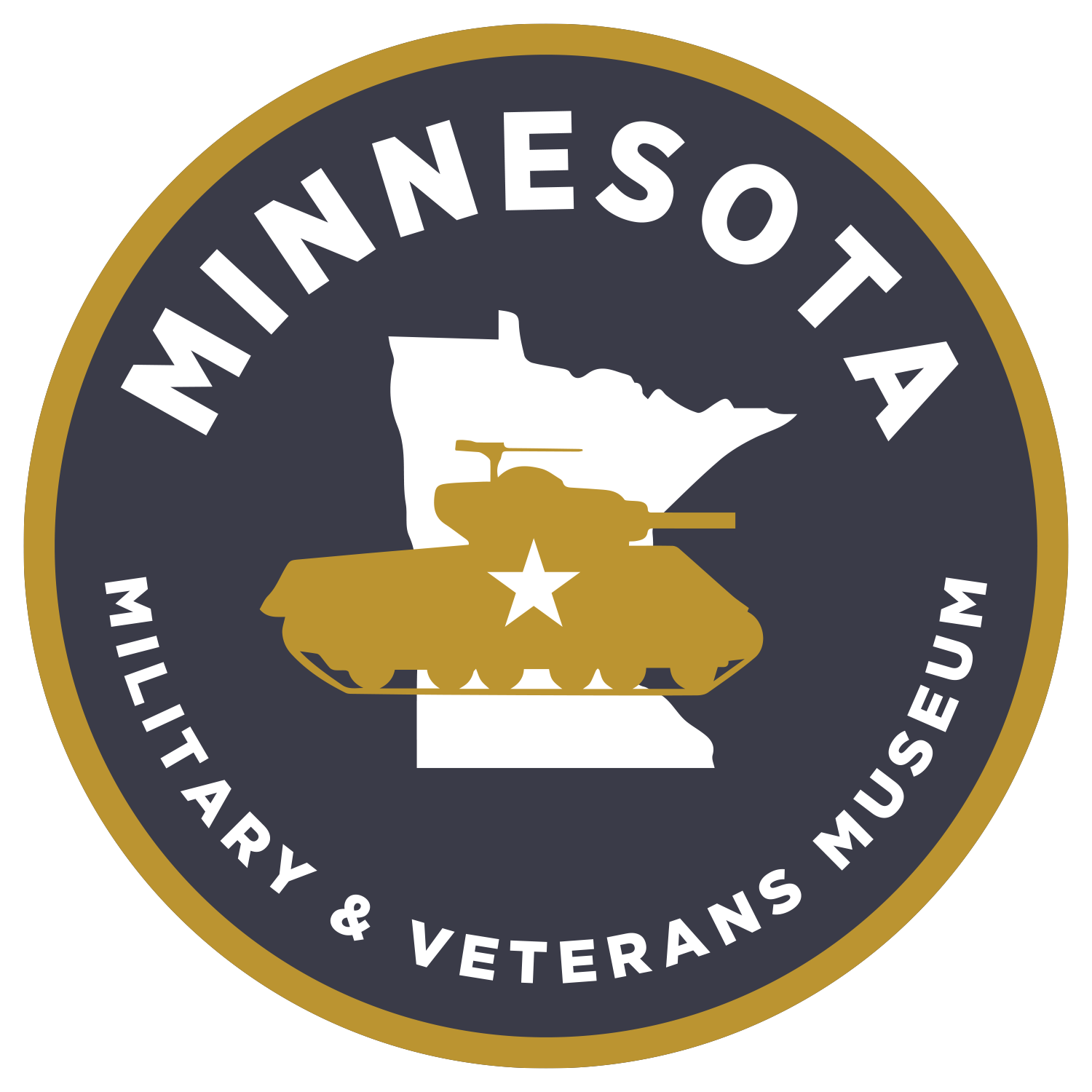WWI
Minnesota and the First World War: The National Guard
Minnesota National Guard troops had barely come back from their duty on the Mexican border when war was declared on Germany in April 1917. Members of the First Minnesota Infantry Regiment were quickly called into state service to guard key installations against sabotage, such as the ore docks at Duluth. Other Guardsmen were placed on alert and told to prepare for a July mobilization.
151st Field Artillery
The First Minnesota Field Artillery Regiment, commanded by Col. George E. Leach of Minneapolis, was redesignated as the 151st Field Artillery and assigned to the 42nd Division. Upon landing at St. Nazaire, France, on October 31, 1917, the 151st promptly began training with the French 75 mm cannon, the superb light field piece then in general use by Allied forces.
After an initial assignment in the cold, muddy Baccarat sector of the Lorraine Front, the regiment was transferred to Chalons-sur-Marne to take part in the 1918 Champagne Defensive. After an intense three-day battle, the German advance was checked and the 151st was immediately ordered to the Chateau-Thierry salient, where French Marshal Foch was to begin his counter-offensive. In a fiercely fought eight-day battle in which the regiment fired 54,709 rounds, the Germans were driven back to the Vesle River, where the Kaiser's army made its last big stand.
At the Vesle the 151st supported the advance of the 69th "Fighting Irish" New York Infantry, and by early August the Germans were in retreat. Then came St. Mihiel and finally the Meuse-Argonne, a fierce, non-stop offensive which lasted right up to the armistice six weeks later. By war's end the regiment has lost 12 of its original 24 guns and 900 horses. There were 489 casualties: 11 killed in action, 37 died of wounds, disease or accident, and 441 had been wounded or gassed.
The 151st remained as part of the Army of Occupation until April 1919. Its men returned home in May to a tumultuous civic welcome.
The 34th Division. The Minnesota National Guard also had three infantry regiments, an ambulance company and a field hospital company. Upon mobilization they went to Camp Cody, New
Mexico, to become part of the new 34th Infantry Division. The men trained at Camp Cody for nearly ten months while waiting to join the AEF in France, but to their great disappointment, they learned in May 1918 that the 34th was chosen to become a depot division. The regiments were broken up and the men sent overseas as individual replacements. The 34th, in the meantime, was refilled with draftees. It went to France, but too late to see action.
Minnesotans in the National Army
At the beginning of the war, the War Department announced that the US Army would consist of Regular Army Divisions (existing Regular Army soldiers and volunteers recruited to bring their units to full strength), National Guard Divisions (existing Guardsmen and volunteers recruited to bring National Guard units to full strength), and National Army Divisions (draftees). Eventually, these Divisions and their personnel became intermixed, but in the initial stages of the war the Divisions were organized as three distinct "armies."
Camp Dodge and the 88th Division
Selective service boards were organized throughout the state upon passage of the draft in May 1917. A site near Des Moines, Iowa, to be named Camp Dodge, was chosen to become one of sixteen US training camps for use by the drafted National Army. Most drafted Minnesotans were sent to Camp Dodge for training.
The sprawling, hastily constructed camp of 5,000 acres looked like all the others being built across the country, with row after monotonous row of wooden barracks and supply buildings. The 88th Division was formed to consist of draftees from Minnesota, Iowa and the Dakotas. Early regiments were made up of men from the same area. The 351st and 352nd Infantry, the 337th Field Artillery, and the 313th Engineers were comprised mostly of Minnesotans.
Faced with continual transfers out of its ranks, the 88th experienced serious training difficulties. Nevertheless, in August 1918 the division was finally sent to France where it was located in HauteAlsace. There, many of its men saw brief but hard fighting before the German retreat and surrender.
Other Divisions and Regiments. Other divisions with large Minnesota contingents were the 30th, 33rd, 86th and 91st. Fort Snelling became a major training center for the Corps of Engineers and, as a result, Minnesota prepared more men to become construction engineers than any other state.
Schools and Colleges
Minnesota's schools and colleges played an important role. An ambulance company from Hamline University was actually the first Minnesota unit to leave the state for service overseas. In addition, thousands of military officers were recruited and trained as a result of the Students' Army Training Corps, organized at the University of Minnesota, Carleton, St. Olaf, Gustavus Adolphus, St. Thomas, Macalester and Hamline. The Dunwoody Industrial Institute in Minneapolis, under the direction of Dr. Charles Prosser, trained thousands of young men to become military machinists, technicians, radio operators, carpenters, printers, bakers and other specialists.
Minnesota Casualties During World War I
This map shows the hometown of each of the Minnesota veterans who died during World War I.
